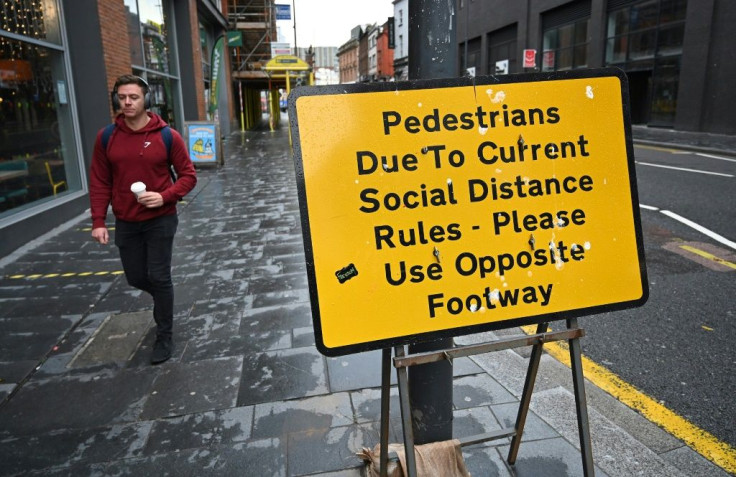UK COVID-19: Boris Johnson Unveils Three-Tier Lockdowns To Slow Outbreak Despite Local Allies' Pushback
KEY POINTS
- Boris Johnson has announced a three-tiered system of lockdowns to combat the resurgent pandemic
- Under the system, Liverpool would close pubs and ban gatherings. Manchester, another outbreak hotspot, has not agreed to the measures
- Other countries in Europe and the United States also face a second wave, threatening to overwhelm hospitals and intensive care units
British Prime Minister Boris Johnson on Monday announced a new three-tiered lockdown plan as COVID-19 surges once more across Europe and the United States. Under the plan, virus hotspots like Liverpool and Greater Manchester would close pubs and also ban gatherings. Greater Manchester has not yet agreed to the measure, and local leaders in Liverpool and across the U.K. have voiced objections to the implementation of the measures.
West Midlands Mayor Andy Street said in a statement that the restrictions were “not something regional leaders supported, nor what I believed would be happening following extensive conversations over recent days”
Just learnt Greater Manchester will be placed into tier 2 restrictions via twitter. Apparently there was a government briefing for GM MPs but I can’t provide details because I wasn’t invited. I suspect this is because they don’t know where Wigan is. What an absolute shambles
— Lisa Nandy (@lisanandy) October 12, 2020
Labour Party leader Keir Starmer told parliament that he doubted the government’s ability to contain the spread of the virus even with new regulations.
“I’m now deeply skeptical the government has actually got a plan to get control of this virus,” Starmer said.
The U.K. has over 603,000 cases and nearly 43,000 deaths from COVID, according to Johns Hopkins University.
Johnson himself had previously said he wanted to avoid further lockdowns, but rising infection numbers have forced his hand. Previously unused hospitals built to manage the initial COVID-19 outbreak are being employed to deal with patient overflow.
In April, Johnson tested positive for COVID and later recovered.
BBC News reported on Oct. 5 that some speculation has lingered over whether he fully recovered. Johnson has stated that he was "as fit as several butchers' dogs."

Britain isn’t the only country in Europe dealing with the resurgent virus. German Chancellor Angela Merkel met with cabinet members Monday to discuss new measures against the virus and has a more significant meeting Wednesday with the various state Premiers.
French intensive care units are being pushed to capacity after youth populations sheltered the virus, reexposing more vulnerable demographics. Their hospitals are understaffed, and it could be months before new personnel can finish training.
The United States is dealing with its own second wave. Daily new cases spent four days over 50,000, fuelled by both populations and governments unwilling to follow prevention guidelines. The disease isn’t distributed evenly across either the U.S. or U.K.: low infection rates in New York City and London have officials moving forward with plans for an air corridor ahead of the holiday tourism season.
A stateside vaccine is likely months away. The exact trends that threw France back into the thick of the pandemic have also played out across the U.S.
© Copyright IBTimes 2025. All rights reserved.





















